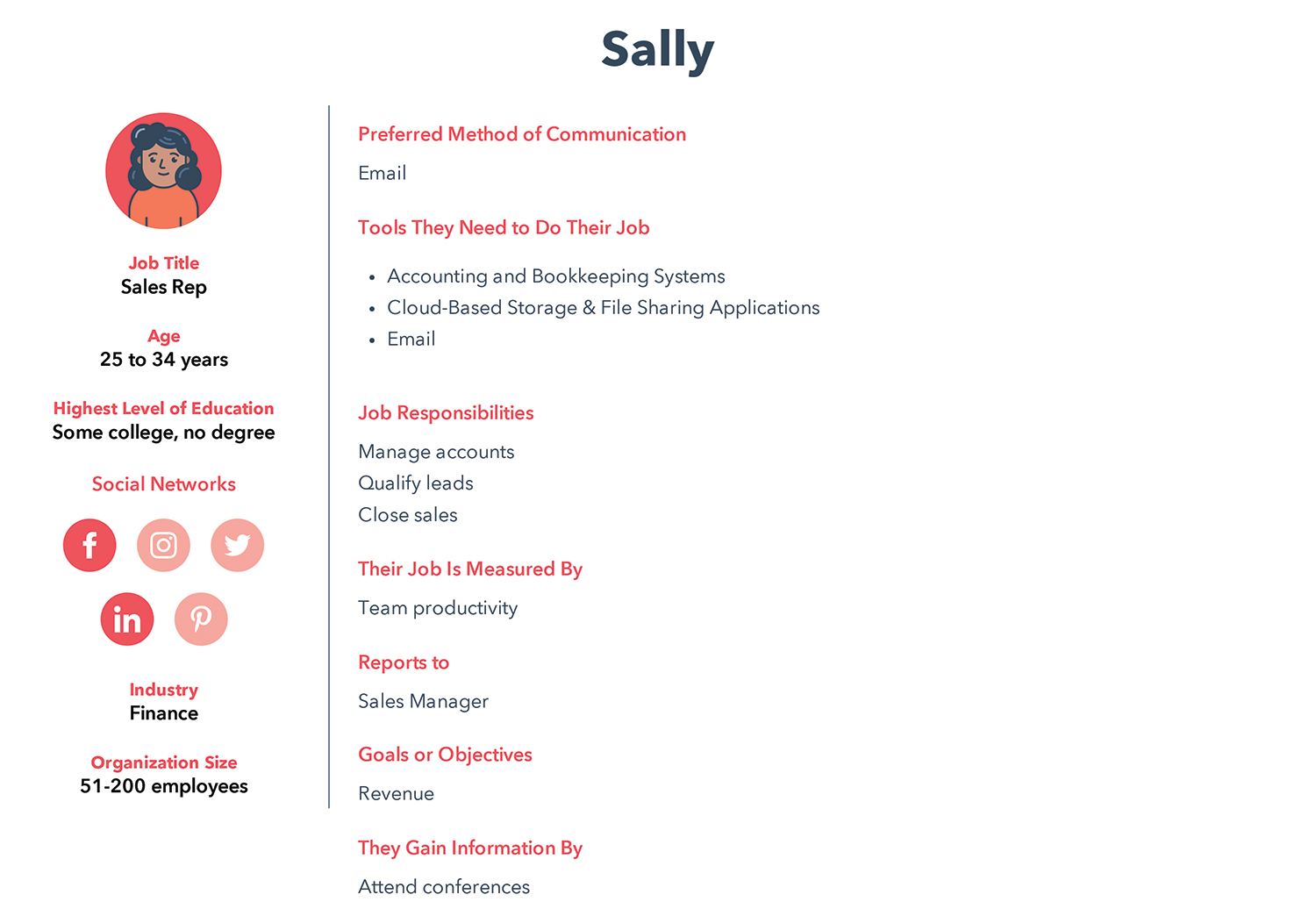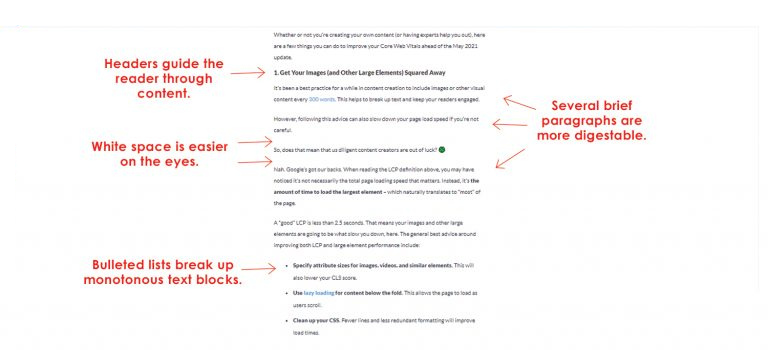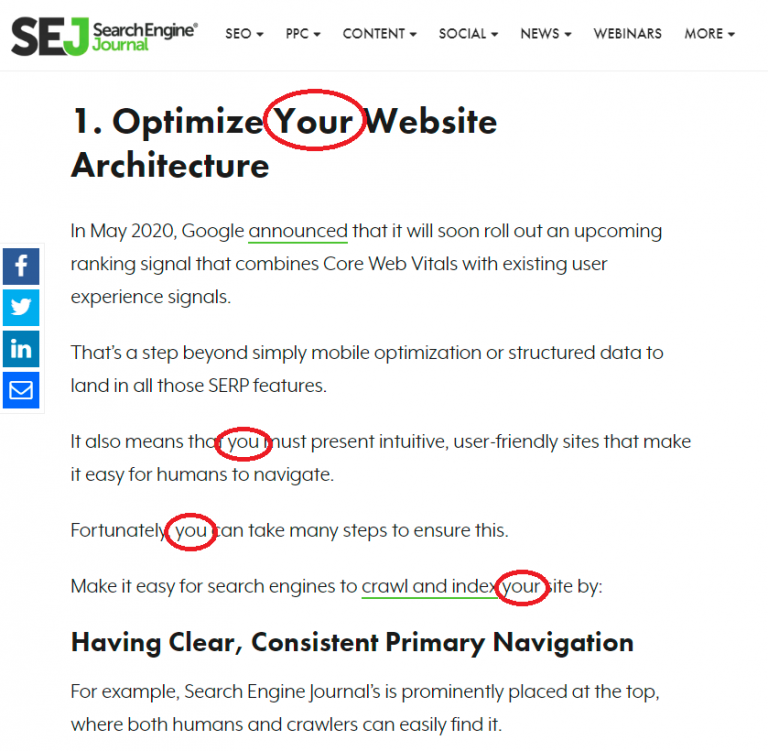As a content writer, you know how important SEO is to your overall success.
Good SEO writing is more than keyword placement and Google algorithms.
It’s about writing with your audience in mind, engaging them, and enticing them to convert.
People go online looking for solutions to their problems. Valuable content that solves those problems is the type of content that SEO writers need to focus on these days.
At least, Google sure thinks so.
Their very own Search Engine Optimization (SEO) Starter Guide prioritizes easy-to-read, clear, fresh content. One of the entire sections in this guide is all about creating relevant, optimized content:
“Think about the words that a user might search for to find a piece of your content. Users who know a lot about the topic might use different keywords in their search queries than someone who is new to the topic.
For example, a long-time football fan might search for “fifa”, an acronym for the Fédération Internationale de Football Association, while a new fan might use a more general query like “football playoffs”.
Anticipating these differences in search behavior and accounting for them while writing your content (using a good mix of keyword phrases) could produce positive results.”
Their main objective is to make users happy by providing the most relevant information possible.
In fact, this goal is so important, Google says it could “likely influence your website more than any of the other factors discussed here.”

Google judges page quality at an in-depth level. These two common acronyms are found in their Google’s Search Quality Evaluator Guidelines:
- E.A.T. (Expertise, Authoritativeness, Trustworthiness): High-quality content should exhibit these three factors.
- Y.M.Y.L. (Your Money or Your Life): This content is judged with very high page quality rating standards since it can impact the reader’s health, happiness, finances, or well-being.
You need content that meets your users’ needs, engages them, and builds real trust.
15 Conversion Copy Tips for Engaging SEO Content
How can you create better SEO content?
Here are 15 techniques to try.
1. Know Who You’re Writing For
To write engaging content, you must first know who your target audience is and what they want from you.
If you’re not sure who you’re writing for, create customer personas to help you.
These are hypothetical, ideal customers that provide a framework for your content.
They enable you to dig deeper in exploring your audience and gain a clear picture of who your prospects are.
Once you’ve identified at least three personas, write specifically to address their concerns and meet their needs.
Need help? Sites like HubSpot provide free persona templates that can help you explore some valuable insight.
 A hypothetical persona I created with HubSpot’s free tool.
A hypothetical persona I created with HubSpot’s free tool.2. Consider the Customer Journey
Valuable information is great, but it doesn’t mean a thing if it isn’t reaching people at the right time.
For content that delivers the most impact, your writing should align with where your customers are in the sales funnel.
Understanding their intent will help you create and deliver the most useful material possible.
You can’t write the same content for someone who has interest in your brand with no intention to buy, and someone who is a current customer.
When you write for where your reader is in their customer journey, you increase the value of your content as well as boost your chances for conversions.
3. Make Your Audience a Promise
You’ve identified your target audience, their needs, and the type of content they’re looking for.
If you’re able to solve their problem, it’s time to make a promise. Here’s a simple three-step guide to make an accurate, careful promise.
- Find the one thing you do really well that will alleviate your prospects’ pain and set you apart from the competition.
- Describe this benefit and make the promise that you can fill this need and improve their current situation.
- Deliver a specific message that clearly states the product you can provide, the benefit it will bring, and how you’ll achieve their goal.
As long as you can live up to it, this promise can help boost conversions and earn loyal customers.
4. Think of Your Content Like a Construction Site
Readability is a huge factor in creating content that converts.
Writing should contain ideas that are forged together with coherency and clarity.
Imagine you’re a builder on a construction site.
The introduction of your content is the foundation of your article. Make it strong so it can support the next layer of construction.
As you continue to build toward the conclusion, each point should serve as a framework that holds up the overall structure.
Further strengthen the construction of your content by:
- Using transition phrases to help you move seamlessly between sections.
- Connecting separate thoughts by showing how they’re related and putting them in context.
- Starting with the most basic concepts and building up to in-depth points to help readers develop an understanding of the subject.
5. Break Up the Monotony of Text Blocks
Another way to improve content readability is to separate content into digestible pieces.
Limit text to brief paragraphs frequently separated by line breaks.
White space around text gives readers a sense of relief and is easier on their eyes.
Guide your audience through your copy and break up the monotony of text boxes with:
- Headers.
- Subheaders.
- Lists (numbered and bulleted).
- Italic/bold text.

Remember, you’re not writing a thesis for a grade.
You’re writing content that people should enjoy reading.
6. Understand Your Reader’s Level of Awareness
Everyone who visits your site is coming from a different level of awareness about their search.
Famed copywriter Eugene Schwartz acknowledged five stages of consumer awareness:
- Unaware: There’s a problem?
- Problem aware: I know my problem, but what can I do about it?
- Solution aware: I know my problem, and I know the solution. Can you help me?
- Product aware: I know what you offer, but I can’t decide if it’s right for me.
- Most aware: I know what you’ve got, and I’m ready to buy…if the price is right.
Decide which of these you want to target and write content that meets their specific needs.
7. Put More Effort into Your Intro
One of the most important aspects of creating content that converts is a solid introduction.
It’s what grabs readers’ attention and draws them in to the rest of your material.
Really dive deep to make it shine by implementing the following:
- Dedicate one line to your opening sentence: This way, you can better evaluate whether it’s powerful enough to compel readers to continue.
- Self-edit with abandon: When you remove unnecessary content, you streamline the information and deliver direct, concise material that delivers value.
- Tell the reader why they should care: The introduction ought to tell your visitor why they should continue to read the rest of your content.
8. Incorporate the Latest Headline Best Practices
While SEO writers know that placing target keywords in headlines can improve visibility, that isn’t enough.
You need to create the right type of headline to drive traffic and boost conversions.
Conduct regular research to uncover stats and insights that can help guide you in creating your own powerful headlines.
Knowing what kinds of headlines get the most engagement from your audience is essential to tempt your readers to invest in your content.
9. Drive Results with Actionable Copy
Actionable copy is an immediate, pointed way to elicit a specific response from your reader.
It helps guide your viewer through the steps needed to subscribe, register, check out, or contact your brand.
Actionable copy gives direct commands using action verbs.
It’s written in second-person, active voice, present tense so the message talks to the reader, rather than about them.
10. Use “You” Language
When writing content that talks to the reader, it’s important to incorporate lots of “you” language.
Nobody wants to read content that’s been written strictly for SEO purposes.
They want to read information that speaks to them, delivers solutions to their problems, and connects with them on a personal level.
Here’s a real-world example:
- Don’t: “In this post, I will explain why it takes more than good content to gain high SERPs.”
- Do: “Think it’s just good content that will land you at the top of Google? Think again.”
You’ll see I dropped the personal pronoun “I” (readers don’t care what I’m going to do) and replaced it with “you” language (readers want to know what’s in it for them).

11. Dig Deep for Better Verbs and Adjectives
There’s not an aspect of life where mediocrity drives success, and content writing is no different.
Don’t deliver dull messages with non-committal verbs and adjectives that are uninspiring to read.
Give your writing some pizzazz and energy to engage your readers and entice them to gobble up every word.
Avoid using words like:
- Thing: That “thing” has a specific name. What is it?
- Very + adjective: There’s always a more descriptive word. “Very hard” is difficult. “Very sad” is sorrowful. Speak to the readers’ emotions with powerful word choices.
- Adverb + weak verb: Streamline your message with stronger verbs. He didn’t “nap briefly.” He snoozed. And that’s what your readers will do if you don’t choose better words for your content. 😴
12. Become a Storyteller
People are tired of pushy sales pitches, but everyone loves a good story.
Use storytelling techniques to grab your readers’ attention and draw them in to your brand.
Use cliffhangers to build interest.
Give your plot a surprising twist to take your readers on an unexpected journey.
Stories are much more engaging and a great way to build a relationship with your audience.
Just remember to keep your brand and your reader front-of-mind.
The story should never overshadow the purpose of your content – to meet readers’ needs and increase conversions.
13. Maintain Positivity
Emotions play a big part in the purchase process.
Today’s consumers are swayed less by reason and more by feelings.
That’s why it’s important for your content to maintain positivity.
Feelings of joy, hope, and inspiration are powerful tools.
You can evoke them in your readers when your content contains positive wording.
After all, who wouldn’t be intrigued by a product that’s “sensational” or “remarkable?”
Positivity builds trust and can help you gain a loyal following of happy customers.
14. Write Effective CTAs
Other than the introduction, the most important element of conversion copy is an effective call-to-action (CTA).
A strong CTA guides, directs, and encourages readers to follow your desired course of action.
When well-executed, a CTA turns a vanilla SEO blog post into a money-maker for any brand.
Don’t expect viewers to read your mind.
While it may seem obvious that you want them to act, you must instruct them on what next steps to take.
Wording should be direct, straightforward, and persuasive to lead to conversions.
15. End Your Content With Powerful Closing Sentences
As a runner nears the end of the race, they don’t come sputtering up to the finish line.
They give it one final push and muster all of their remaining energy to ensure they cross the line with speed and purpose.

The same goes for your content.
Your closing remarks are your final opportunity to inspire your reader and drive them to take action.
Use your last one or two sentences to drive home your main point.
Ask a final question or leave them with a memorable image.
Whatever you do, look ahead to the future and encourage your reader to do the same.
SEO Goes Far Beyond Keywords and Algorithms
SEO is important for online content success.
It helps increase visibility and expand your reach, all of which can lead to increased conversions.
The real eye-opener is this: Without high-quality, user-friendly copy, SEO is nothing.
As an SEO writer, if you’ve been focusing on the wrong audience (Google), then it’s time to rethink your strategy.
When you revisit the human side of SEO and refine your copy, the conversions are sure to come.
More Resources:
- SEO Content Writing vs. SEO Copywriting: Is There a Difference?
- 10 Tips for Mastering Your SEO Content Strategy
- Core Web Vitals: A Complete Guide
Image Credits
All screenshots taken by author, April 2021.





